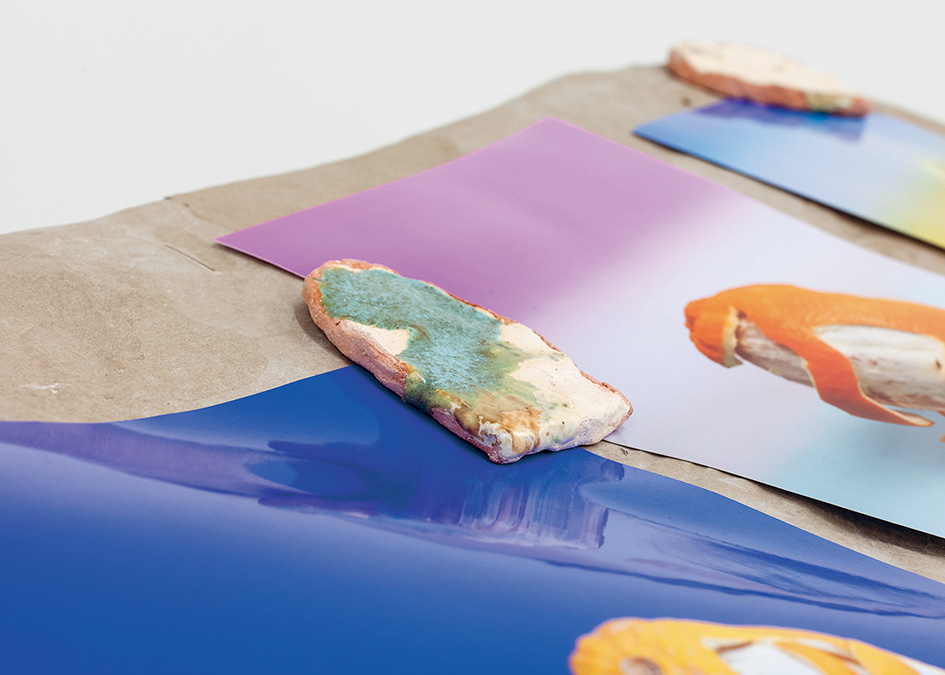Johana Pošová
Happy Family
Portrait photography that shows smiling family members convinces us that this is the right form of family happiness. Yet we all know that the reality is different and more complicated – hiding behind the doors of our homes, away from the photographer’s viewfinder. We pose for collective photographs to look great, without frowns on our faces – that would not be appropriate. We keep our home clothes in the closet and push the unfinished snack away from the visual field. Happy Family by Johana Pošová reveals this “off camera” world. The half-hidden intimacy of fragile relationships, unresolved dramas, unfulfilled visions and dreams, and the irrational, all this could be found at her exhibition of objects and photographs at the Fotograf Gallery at the turn of 2017 and 2018. Shortly after her studies under Hynek Alta and Aleksandra Vajd at the Academy of Arts, Architecture & Design in Prague, Johana Pošová was introduced to the general public with her Under Pressure exhibition at the Gallery of Prague in 2012. She was already interested in the human body and intimacy, behaviour and living in the space – in gestures and facial expressions. Since 2014, she has been creating objects. This shift of interest was affected by her co-operation with Barbora Fastrová who had studied in the same studio but specialised in sculpture already during her studies. In the past two years, the two artists presented their work together at several exhibitions, and they went to several residential stays as an art duo. They often use papier- mâché to create amorphous (and usually larger-than-life) objects. The Happy Family exhibition can be seen as the first important independent presentation of Pošová where the impact of her co-operation with Fastrová can be really seen. Pošová expands into the space of the gallery, leaving there traces of the existence of people/families: the remains of inedible breakfast and tables which look like crooked animals, serving as bases for photographic prints. We cannot see the faces of the persons photographed; our attention is drawn to their home clothes. Their slippers symbolize the intimacy of the environment we don’t usually put on display. In his exhibition notes, curator Jiří Ptáček says that we can “see [the exhibition] as a paraphrase of children’s magical consciousness”. The children’s perspective from under the table was emphasized by the monstrous installation of the table-animal in the gallery underground. From Kunderian exploration of gestures and corporeality in her previous works to the photogram focus on the possibilities of photography, Pošová has set out on her journey to a fairy-tale wonderland. Imagination is somewhat blurred: we cannot re-construct what we had experienced and felt in our childhood. The relics fill the gallery with a kind of sadness and damaged nostalgia. While waiting for the happy family, we have forgotten the bread had already gone mouldy. And our fears are still great and intimate.
Tereza Špinková
#31 Body
Archive
- #45 hypertension
- #44 empathy
- #43 collecting
- #42 food
- #41 postdigital photography
- #40 earthlings
- #39 delight, pain
- #38 death, when you think about it
- #37 uneven ground
- #36 new utopias
- #35 living with humans
- #34 archaeology of euphoria
- #33 investigation
- #32 Non-work
- #31 Body
- #30 Eye In The Sky
- #29 Contemplation
- #28 Cultura / Natura
- #27 Cars
- #26 Documentary Strategies
- #25 Popular Music
- #24 Seeing Is Believing
- #23 Artificial Worlds
- #22 Image and Text
- #21 On Photography
- #20 Public Art
- #19 Film
- #18 80'
- #17 Amateur Photography
- #16 Photography and Painting
- #15 Prague
- #14 Commerce
- #13 Family
- #12 Reconstruction
- #11 Performance
- #10 Eroticon
- #9 Architecture
- #8 Landscape
- #7 New Staged Photography
- #6 The Recycle Image
- #5 Borders Of Documentary
- #4 Intimacy
- #3 Transforming Of Symbol
- #2 Collective Authorship
- #1 Face


